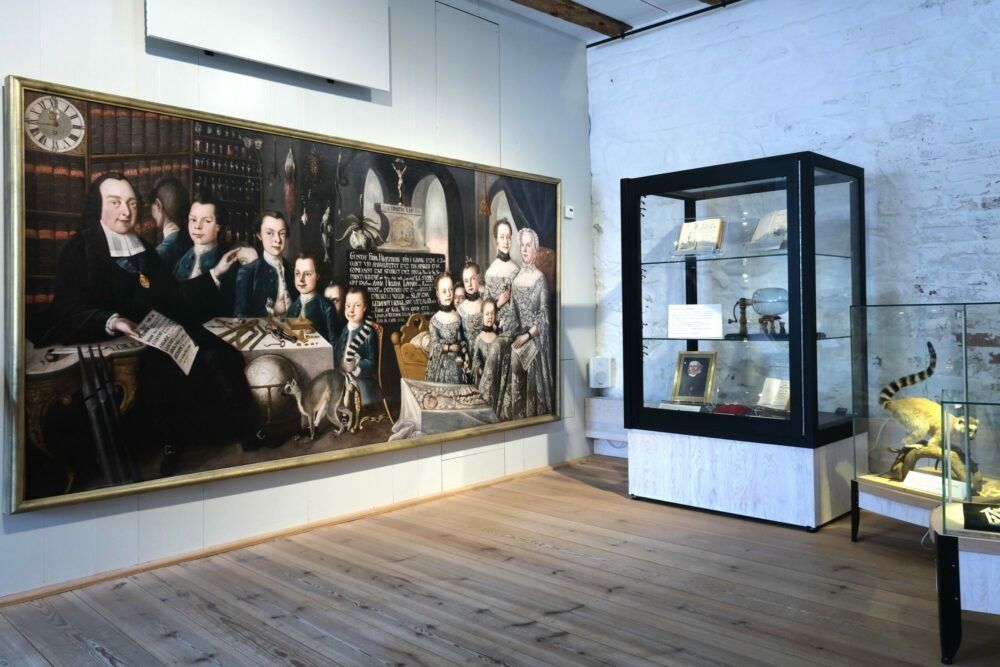11. Hjortberg’s Epitaph
The painting depicting the family of dean Hjortberg in Vallda-Släp is one of the most interesting Swedish paintings of the 18th century. On the one hand it is a fantastic family portrait, primarily of the eight surviving and seven dead children, and on the other the painting reveals the entire enlightenment way of thinking.
As a clergyman on the boats of the East India Company dean Gustaf Fredrik Hjortberg had been to China no fewer than three times. In the painting he depicts a number of exotic animals e.g. a lemur and a scorpion from those voyages and those of his colleagues. Various scientific instruments lie on a table, suggestive of Hjortberg’s interest in new discoveries. Among other things he brought home from China was a seed cleaning machine of which the Regional Museum has a model.
But Hjortbergs’s greatest interest was perhaps medicine for animals and people. An entire medicine cabinet in the painting calls this to mind. Gustaf Frederik Hjortberg was a true enlightenment man. The fate of the family is also clearly apparent from the portrayed. On the one hand we see the many children fitting in with a large population increase of the 18th century but on the other we see how many have died. The dead children are included in the picture but partially concealed. We also see that two of them died as infants in their cradles. Not even the children of well-to-do clergy families survive smallpox and other diseases.

